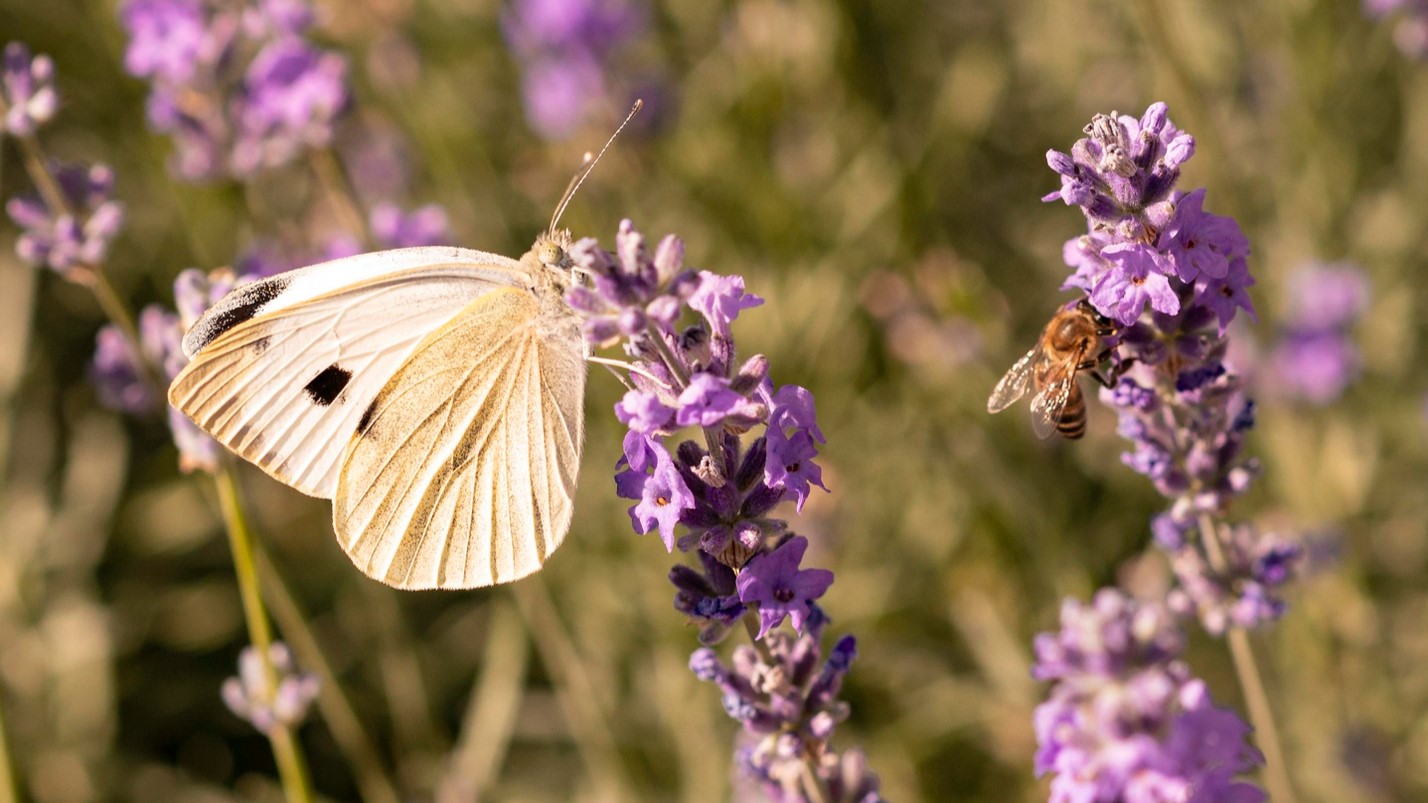middleportal.com – If you’re a garden enthusiast, you might already know how essential bees and butterflies are to the health of your garden. These creatures not only add beauty but also play a critical role in pollination, which helps your plants thrive. If you want to create a garden that attracts these wonderful pollinators, you’re in the right place. In this article, we’ll explore the best plants for attracting bees and butterflies, along with tips on how to create a welcoming environment for them.
Why Bees and Butterflies Matter
Before we dive into the best plants, let’s quickly discuss why bees and butterflies are so important for your garden. Bees, for instance, are one of the most effective pollinators. They help a wide range of plants reproduce by transferring pollen from one flower to another. Without them, many of the fruits and vegetables we enjoy today would be at risk.
Similarly, butterflies also contribute to pollination, though they’re generally not as efficient as bees. However, they are still vital to the ecosystem, providing food for birds, other insects, and even small mammals. By attracting bees and butterflies, you’re supporting biodiversity and improving the health of your garden.
Best Plants for Attracting Bees
When choosing plants for your garden, it’s important to pick species that offer both nectar and pollen. Here are some of the best plants that will make your garden irresistible to bees:
1. Lavender (Lavandula spp.)
Lavender is a fantastic choice for attracting bees. The flowers are rich in nectar, and the plant’s fragrant scent is irresistible to pollinators. Bees love its small, purple blooms, which make it an ideal addition to any garden. Lavender is also easy to grow, thrives in full sun, and is drought-tolerant once established.
2. Bee Balm (Monarda didyma)
As the name suggests, bee balm is a favorite of bees. This plant produces vibrant flowers in shades of red, pink, and purple, which are full of nectar. Bee balm thrives in full sun to partial shade and is known for its ability to attract a wide range of pollinators, including bees, butterflies, and hummingbirds.
3. Sunflowers (Helianthus annuus)
Sunflowers are a great choice for drawing bees into your garden. Their large, bright blooms are packed with pollen, which attracts bees in droves. Not only do sunflowers support pollinators, but they also add a cheerful, bold statement to your garden, standing tall and proud.
4. Thymes (Thymus vulgaris)
Thyme is another plant that will appeal to both bees and butterflies. This aromatic herb produces small flowers in shades of white, purple, or pink, which are a go-to source of nectar for bees. Thyme is a low-maintenance plant that thrives in dry, well-drained soil and can be used in culinary dishes as well.
5. Borage (Borago officinalis)
Borage, often called “bee bush,” is one of the top plants to attract pollinators. The star-shaped blue flowers are packed with nectar and attract not only bees but also butterflies. Borage grows easily in a sunny spot and adds a beautiful splash of color to your garden.
Best Plants for Attracting Butterflies
While bees are excellent pollinators, butterflies bring their own charm to the garden. Their delicate wings and vibrant colors create a magical atmosphere. Here are some plants that will help you attract butterflies to your space:
1. Butterfly Bush (Buddleja davidii)
As the name suggests, the butterfly bush is a top contender for attracting butterflies. Its long, dense spikes of fragrant flowers are loved by these winged creatures. Butterfly bushes come in a variety of colors, from purple and pink to white and yellow, making them a versatile addition to any garden. These plants are easy to grow and thrive in full sun.
2. Milkweed (Asclepias spp.)
Milkweed is a must-have plant for attracting monarch butterflies. These iconic butterflies rely on milkweed as a food source for their larvae. The plant produces clusters of small flowers in colors ranging from pink to orange, and they are known for attracting not only monarchs but also a wide range of other butterfly species.
3. Coneflower (Echinacea purpurea)
Coneflowers are another popular choice for attracting butterflies. Their bright, daisy-like flowers in shades of purple, pink, and white are rich in nectar. These hardy perennials are easy to grow and can withstand a variety of weather conditions, making them an excellent addition to your butterfly garden.
4. Lantana (Lantana camara)
Lantanas are vibrant, hardy plants that attract butterflies with their small, colorful clusters of flowers. The plants are particularly loved by butterflies because they produce an abundance of nectar. Lantanas thrive in full sun and are drought-tolerant, making them an excellent choice for low-maintenance gardens.
5. Zinnias (Zinnia spp.)
Zinnias are another butterfly favorite. Their bright, colorful blooms—available in shades of red, orange, pink, and yellow—attract butterflies and bees alike. Zinnias are relatively easy to grow and can be planted from seeds in the spring. They love the sun and can thrive in a variety of soil conditions.
How to Create a Pollinator-Friendly Garden
To make your garden as welcoming as possible to both bees and butterflies, here are some additional tips:
1. Choose Native Plants
Native plants are best suited to local pollinators because they provide the right food and habitat for them. Consider incorporating native flowering plants that are naturally abundant in your region. This will help provide a consistent and reliable food source for your pollinators.
2. Provide Water Sources
Bees and butterflies need water just as much as they need nectar and pollen. Add a shallow birdbath, a small pond, or a container of water with pebbles to your garden. This will provide them with a refreshing place to hydrate while they’re busy pollinating your flowers.
3. Avoid Pesticides
Pesticides can be harmful to pollinators, so avoid using them in your garden. Opt for natural pest control methods, such as encouraging beneficial insects or using organic sprays, to protect your plants without harming bees and butterflies.
4. Add Shelter and Nesting Sites
To truly support pollinators, provide places for them to shelter and nest. For bees, consider leaving some bare soil or sand in a quiet corner of your garden, as many bees nest in the ground. For butterflies, add shrubs or tall grasses where they can rest and hide from predators.
5. Plant in Clusters
Planting in clusters will make it easier for bees and butterflies to find food. Instead of scattering flowers around your garden, group them together in patches. This creates a more vibrant, attractive landscape for pollinators and increases the chances of them visiting your garden.
Attracting bees and butterflies to your garden not only enhances its beauty but also supports the environment. By choosing the right plants and creating a pollinator-friendly habitat, you can play a part in supporting these essential creatures and encourage a thriving ecosystem in your backyard. Whether you prefer the cheerful sunflower, the fragrant lavender, or the delicate butterfly bush, there are plenty of options to make your garden a paradise for these incredible pollinators. Happy gardening!













